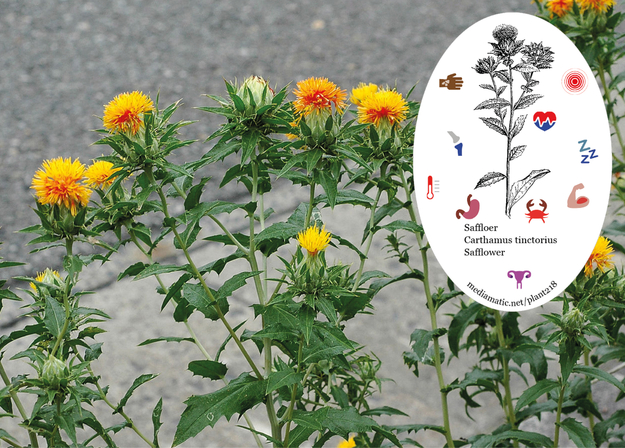Safflower is commonly grown as a food plant, but also has a wide range of medicinal uses. Modern research has shown that the flowers contain a number of medically active constituents and can, for example, reduce coronary heart disease and lower cholesterol levels. Alterative, analgesic, antibacterial, antiphlogistic, haemopoietic. Treats tumours and stomatitis. The flowers are anticholesterolemic, diaphoretic, emmenagogue, laxative, purgative, sedative and stimulant. They are used to treat menstrual pains and other complications by promoting a smooth menstrual flow and were ranked third in a survey of 250 potential anti-fertility plants. In domestic practice, the flowers are used as a substitute or adulterant for saffron in treating infants complaints such as measles, fevers and eruptive skin complaints. Externally, they are applied to bruising, sprains, skin inflammations, wounds etc. The flowers are harvested in the summer and can be used fresh or dried. They should not be stored for longer than 12 months. It is possible to carefully pick the florets and leave the ovaries behind so that seed can be produced, though this procedure is rather more time-consuming. The plant is febrifuge, sedative, sudorific and vermifuge. When combined with Ligusticum wallichii it is said to have a definite therapeutic effect upon coronary diseases. The seed is diuretic, purgative and tonic. It is used in the treatment of rheumatism and tumours, especially inflammatory tumours of the liver. The oil is charred and used to heal sores and treat rheumatism. In Iran, the oil is used as a salve for treating sprains and rheumatism. Source: https://pfaf.org/
Safflower
Carthamus tinctorius
Find more about this plant on Wikipedia.
